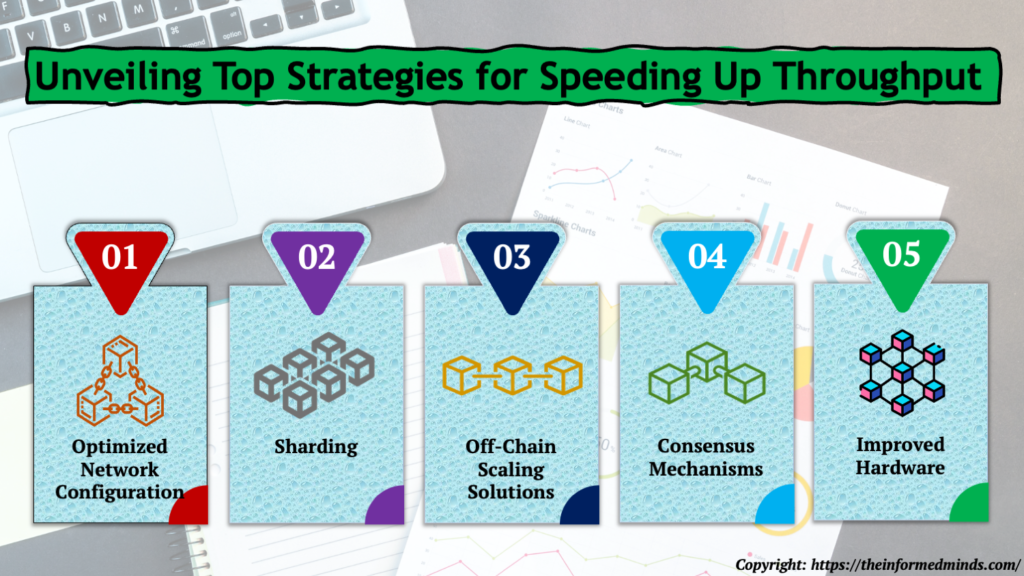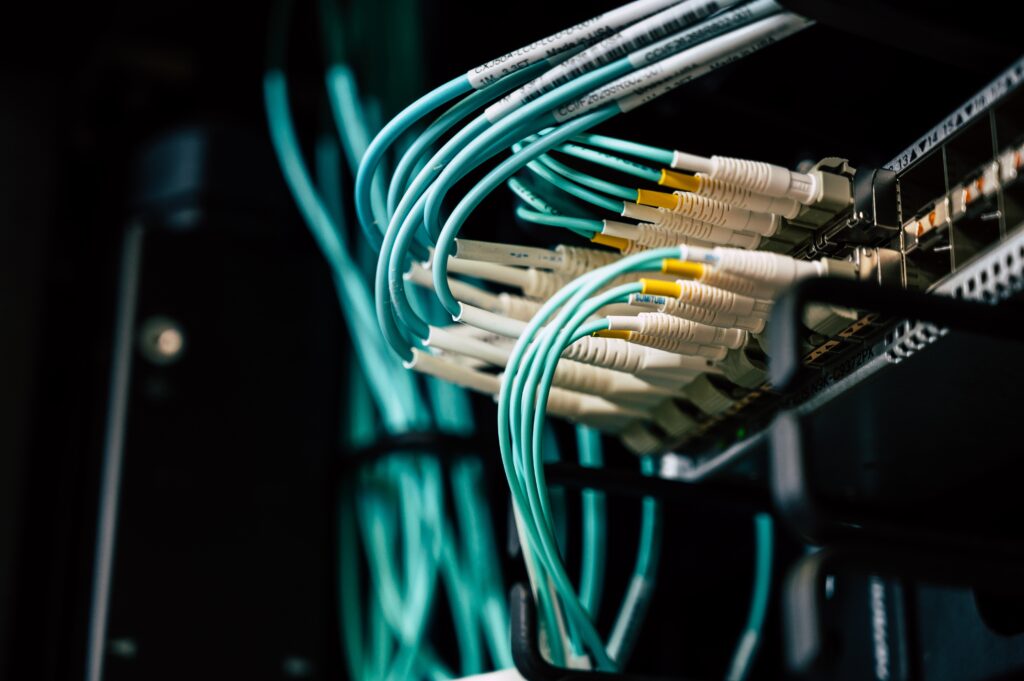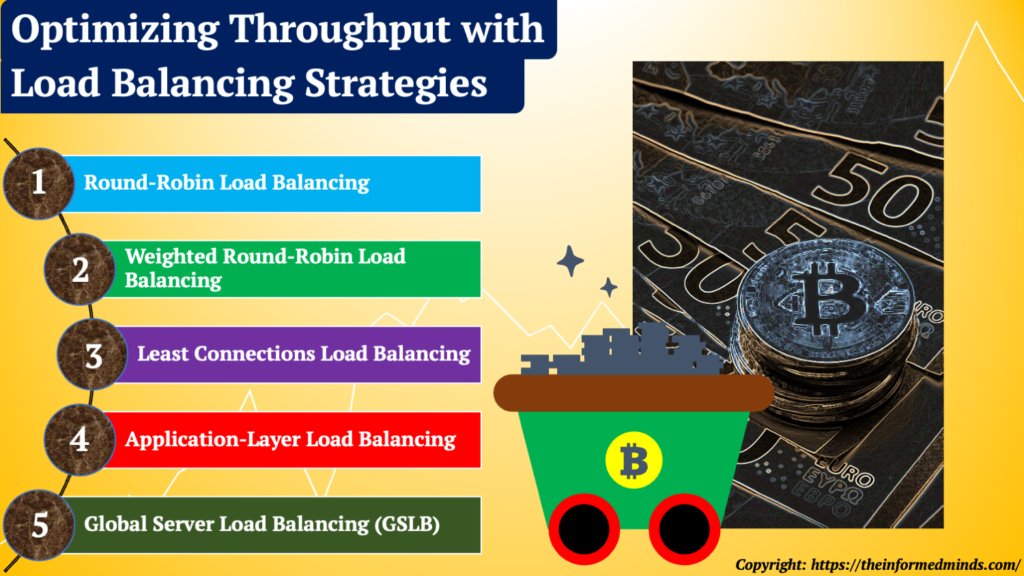To Share is to Show You Care!
Are you tired of your blockchain transactions moving at a snail’s pace? Frustrated by limited bandwidth that’s holding back your crypto ventures? You’re not alone! In this post, we’ll explore the best-kept secrets to supercharge your blockchain throughput and bid farewell to those low-speed woes. Get ready for a bandwidth miracle!
1. Why Bandwidth Matters in Blockchain?

Blockchain technology, while innovative and secure, faces certain challenges that can impact its efficiency and scalability. Bandwidth, or the capacity of the network to transmit data, is crucial in the blockchain context because it directly affects the speed and volume of transactions. Here’s why bandwidth matters.
Transaction Processing
Bandwidth plays a key role in processing transactions. A low-bandwidth network can lead to delays in transaction confirmations, causing frustration for users.
Scalability
Limited bandwidth can hinder a blockchain network’s ability to scale. As more users and transactions join the network, it can become overwhelmed, leading to slower and more costly transactions.
2. The Best-Kept Secrets to Accelerate Throughput

2.1 Optimized Network Configuration

Bandwidth Allocation: This involves ensuring that your network allocates an adequate amount of bandwidth to the blockchain nodes. When the network is properly configured, it can handle a higher volume of transactions efficiently.
Quality of Service (QoS): QoS policies prioritize certain types of network traffic over others. By implementing QoS for your blockchain traffic, you make sure that transactions are given priority, reducing the chances of congestion or delay.
2.2 Sharding
Sharding is a technique that involves breaking the blockchain into smaller, more manageable parts called “shards.” Each shard is responsible for processing a subset of transactions. Sharding enhances throughput in several ways:
Parallel Processing: Transactions are processed in parallel across multiple shards, significantly increasing the network’s overall capacity.
Reduced Load: With the load distributed among various shards, the main blockchain experiences less congestion and faster transaction processing.

2.3 Off-Chain Scaling Solutions

Lightning Network: The Lightning Network is a second-layer solution for Bitcoin. It enables off-chain transactions, where numerous transactions occur outside the main blockchain. This reduces congestion and speeds up transaction processing on the main blockchain.
Plasma: For Ethereum, Plasma is a scaling solution that allows the creation of child chains, each handling specific types of transactions. These child chains can operate independently, decreasing the load on the main Ethereum blockchain.
2.4 Consensus Mechanisms
The consensus mechanism is the protocol used to validate and add new transactions to the blockchain. Some mechanisms are more efficient than others:
Proof of Stake (PoS): PoS is energy-efficient and requires validators to hold cryptocurrency as collateral. It reduces the computational power needed for consensus, resulting in faster transaction processing.
Delegated Proof of Stake (DPoS): DPoS is similar to PoS but involves a smaller group of validators chosen by token holders. This enhances network efficiency and transaction speed.

2.5 Improved Hardware

Upgrading your hardware infrastructure can have a substantial impact on blockchain performance:
Faster Processors: High-speed processors can quickly execute transactions and smart contracts.
More Memory: Increased memory capacity allows for the efficient storage of blockchain data, reducing bottlenecks.
High-Speed Internet: A robust internet connection ensures that data can be transmitted quickly and reliably.
3. Load Balancing Techniques to improve the throughput
Load balancing is a critical aspect of optimizing blockchain throughput and ensuring the efficient use of available bandwidth. By distributing workloads effectively, you can prevent network congestion and bottlenecks. Here are some key load balancing techniques.

3.1 Round-Robin Load Balancing
Round-robin load balancing is a simple yet effective technique that evenly distributes incoming network requests across multiple blockchain nodes or servers. This technique operates on a “first-come, first-served” basis, ensuring that each node receives an equal share of the workload.

Benefits: Even Workload Distribution: Round-robin load balancing prevents overloading a single node while others remain underutilized.
Fault Tolerance: If one node fails, requests are automatically rerouted to the remaining nodes, ensuring continued operation.
Considerations: Unequal Workloads: In some scenarios, not all transactions are equal. Some may be more resource-intensive than others, which can lead to uneven processing times.
3.2 Weighted Round-Robin Load Balancing
Weighted round-robin load balancing is an extension of the round-robin method. In this technique, you assign weights to each node based on its capacity and performance. Nodes with higher weights handle more requests than those with lower weights.
Benefits: Resource-Based Allocation: Weighted round-robin allows for resource-aware distribution, where nodes with greater capabilities receive more requests.
Considerations: Configuration Complexity: Assigning appropriate weights requires knowledge of each node’s capabilities, and this configuration can be complex.

3.3 Least Connections Load Balancing
The least connections load balancing method directs incoming requests to the node with the fewest active connections at the moment. This approach aims to distribute requests according to the current workload on each node.

Benefits: Dynamic Workload Balancing: Nodes that are less busy handle more requests, ensuring that the network adapts to changing traffic patterns.
Considerations: Latency: If some nodes have slower response times, the method may not consider response time when making load-balancing decisions.
3.4 Application-Layer Load Balancing
Application-layer load balancing involves making decisions based on the specific content or features of the incoming transactions. This technique is often used for blockchain applications that require more advanced routing logic.
Benefits: Customized Routing: Application-layer load balancing can route transactions to nodes that have specific capabilities or features required for certain types of transactions.
Considerations: Increased Complexity: Implementing application-layer load balancing requires a deeper understanding of blockchain applications and their requirements.

3.5 Global Server Load Balancing (GSLB)
Global server load balancing goes beyond the scope of a single data center or location. It distributes traffic across multiple geographically dispersed data centers or cloud regions. GSLB can optimize blockchain networks by routing users to the nearest and most available data center, reducing latency and improving performance.

Benefits: Geographical Optimization: GSLB ensures that users are directed to the nearest data center, reducing latency and improving the user experience.
Considerations: Network Complexity: Managing multiple data centers or cloud regions can be complex and may require specialized tools and expertise.
4. Leaving Your Low-Speed Woes in Tears
By implementing these strategies, you can address the common challenges associated with low throughput and limited bandwidth in blockchain networks. Your transactions will be processed more quickly and efficiently, and you can scale your blockchain operations with confidence. Say goodbye to the frustration of slow transactions and welcome the promise of faster, smoother blockchain experiences.
Conclusion
Low throughput and limited bandwidth are common challenges in the blockchain world. However, with the best strategies in place, you can turbocharge your blockchain operations and achieve remarkable results. Unlock the blockchain bandwidth miracle in 2023 and leave those low-speed woes in tears. Your crypto journey is about to get a whole lot faster! the blockchain landscape is continually evolving. By staying informed and employing these best practices, you can harness the full potential of blockchain technology and ensure your crypto ventures thrive in 2023 and beyond.
Frequently Asked Questions
Q1: How do I increase throughput in blockchain?
A: To increase throughput in blockchain, you can utilize techniques like sharding, off-chain scaling solutions, and optimized network configurations. These strategies distribute the workload efficiently, allowing for more transactions to be processed simultaneously.
Q2: How do you overcome scalability in blockchain?
A: Scalability in blockchain can be overcome through methods such as sharding, adopting faster consensus mechanisms, and implementing off-chain solutions. These approaches help the network handle a larger number of transactions.
Q3: What is the throughput of a blockchain?
A: The throughput of a blockchain refers to the number of transactions that the network can process within a given timeframe. It is a measure of the network’s capacity for handling transactions efficiently.
Q4: Why is blockchain performance hard to measure?
A: Blockchain performance can be challenging to measure due to various factors, including network congestion, varying transaction types, and different consensus mechanisms. Performance metrics can differ based on these factors, making it complex to obtain a single, standard measurement.
Q5: How do you increase network throughput capacity?
A: Increasing network throughput capacity involves optimizing the network infrastructure, upgrading hardware, implementing load balancing techniques, and prioritizing blockchain traffic through Quality of Service (QoS) policies.
Q6: How do you fix throughput?
A: To fix throughput issues, you can adjust network configurations, implement sharding, adopt more efficient consensus mechanisms, and employ off-chain solutions to relieve congestion and increase the network’s processing capacity.
Q7: What is an example of a solution to blockchain scaling limitations?
A: An example of a solution to blockchain scaling limitations is the Lightning Network for Bitcoin, which allows off-chain transactions to reduce congestion on the main Bitcoin blockchain.
Q8: How do you resolve scalability issues?
A: Scalability issues can be resolved by adopting techniques such as sharding, off-chain solutions, and transitioning to more efficient consensus mechanisms. These strategies help the blockchain network handle more transactions.
Q9: How do you fix scalability problems?
A: To fix scalability problems, consider implementing solutions like sharding, off-chain scaling, and selecting consensus mechanisms that reduce resource-intensive processes, enabling the network to scale more effectively.
Q10: What is the difference between latency and throughput in blockchain?
A: Latency in blockchain is the time delay between initiating a transaction and its confirmation, while throughput refers to the number of transactions processed within a specific timeframe. Latency focuses on the time aspect, while throughput focuses on the quantity of transactions.
Q11: What is the maximum throughput of a network?
A: The maximum throughput of a network is the highest number of transactions the network can process within a given time period without becoming congested or slowing down.
Q12: What is throughput in the network layer?
A: Throughput in the network layer represents the rate at which data is successfully transmitted through the network. It measures the network’s capacity for data transfer.
Q13: What is the longest chain problem in blockchain?
A: The longest chain problem in blockchain refers to the challenge of determining the correct or most valid chain in a blockchain with multiple forks. Miners aim to select and build on the longest chain, which represents the consensus among network participants.
Q14: Why is blockchain often slow?
A: Blockchain can be slow due to factors like the need for consensus among nodes, resource-intensive proof-of-work (PoW) algorithms, network congestion, and limited bandwidth. These factors can lead to slower transaction processing.
Q15: What is the failure rate of blockchain?
A: The failure rate of blockchain can vary depending on the specific blockchain network, its security measures, and use cases. However, blockchain is designed to be highly resilient, with a very low failure rate, making it a secure and reliable technology for various applications.
The Informed Minds
I'm Vijay Kumar, a consultant with 20+ years of experience specializing in Home, Lifestyle, and Technology. From DIY and Home Improvement to Interior Design and Personal Finance, I've worked with diverse clients, offering tailored solutions to their needs. Through this blog, I share my expertise, providing valuable insights and practical advice for free. Together, let's make our homes better and embrace the latest in lifestyle and technology for a brighter future.

